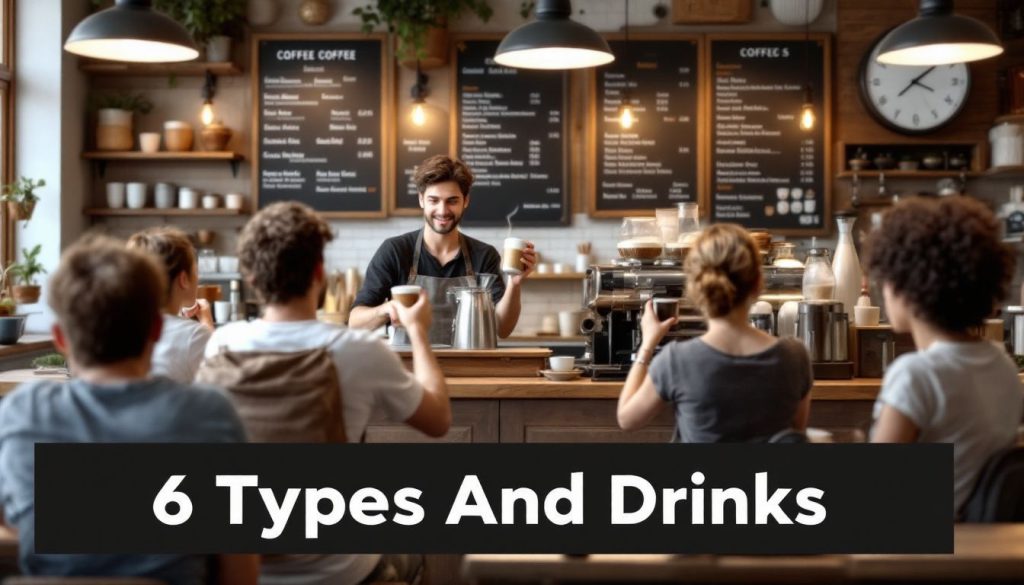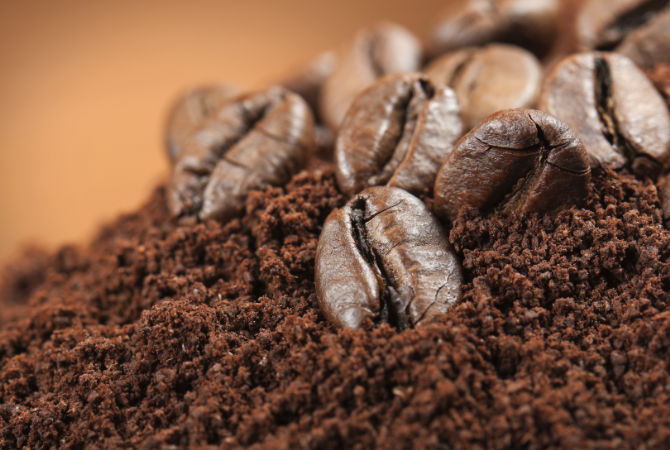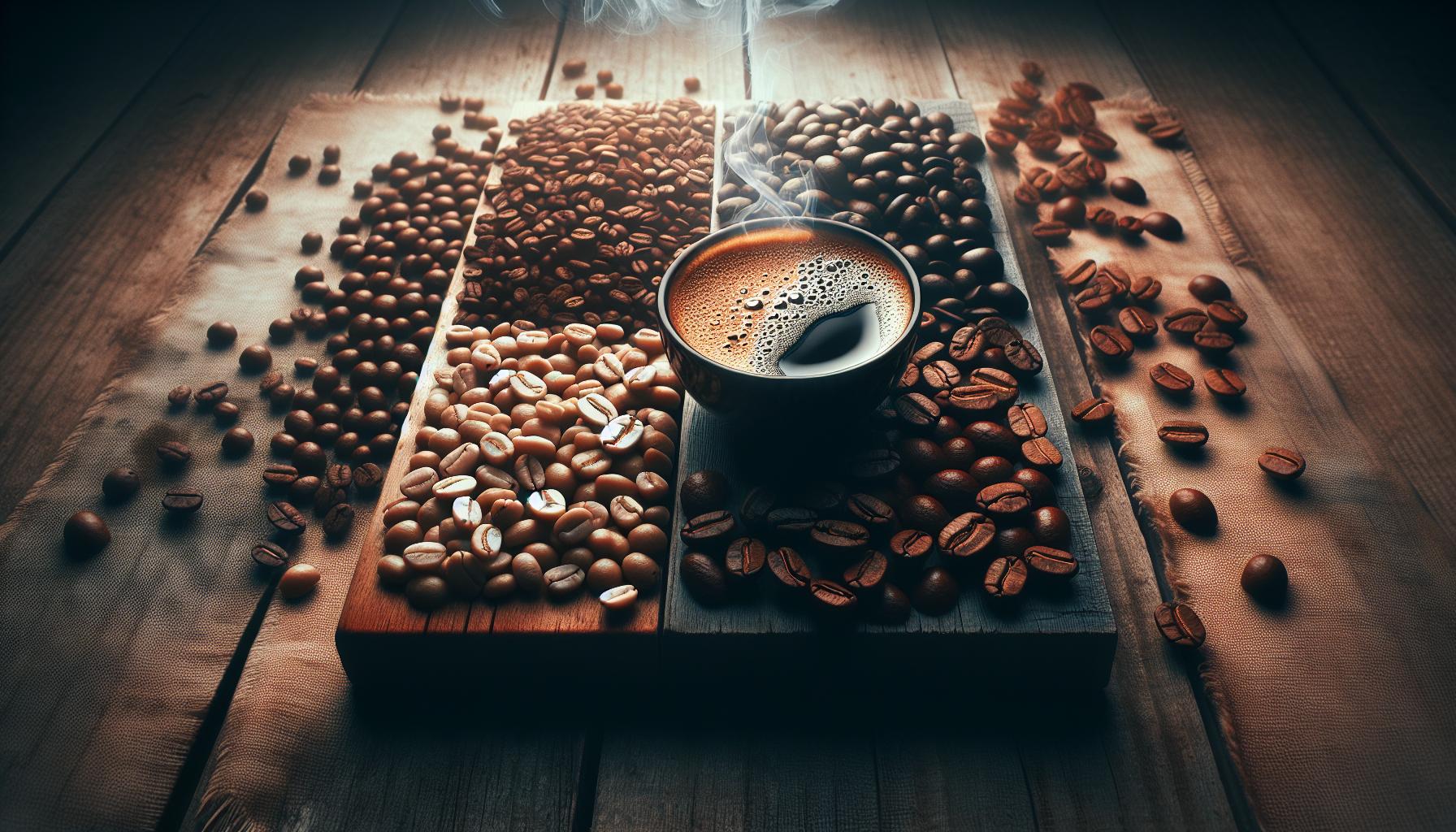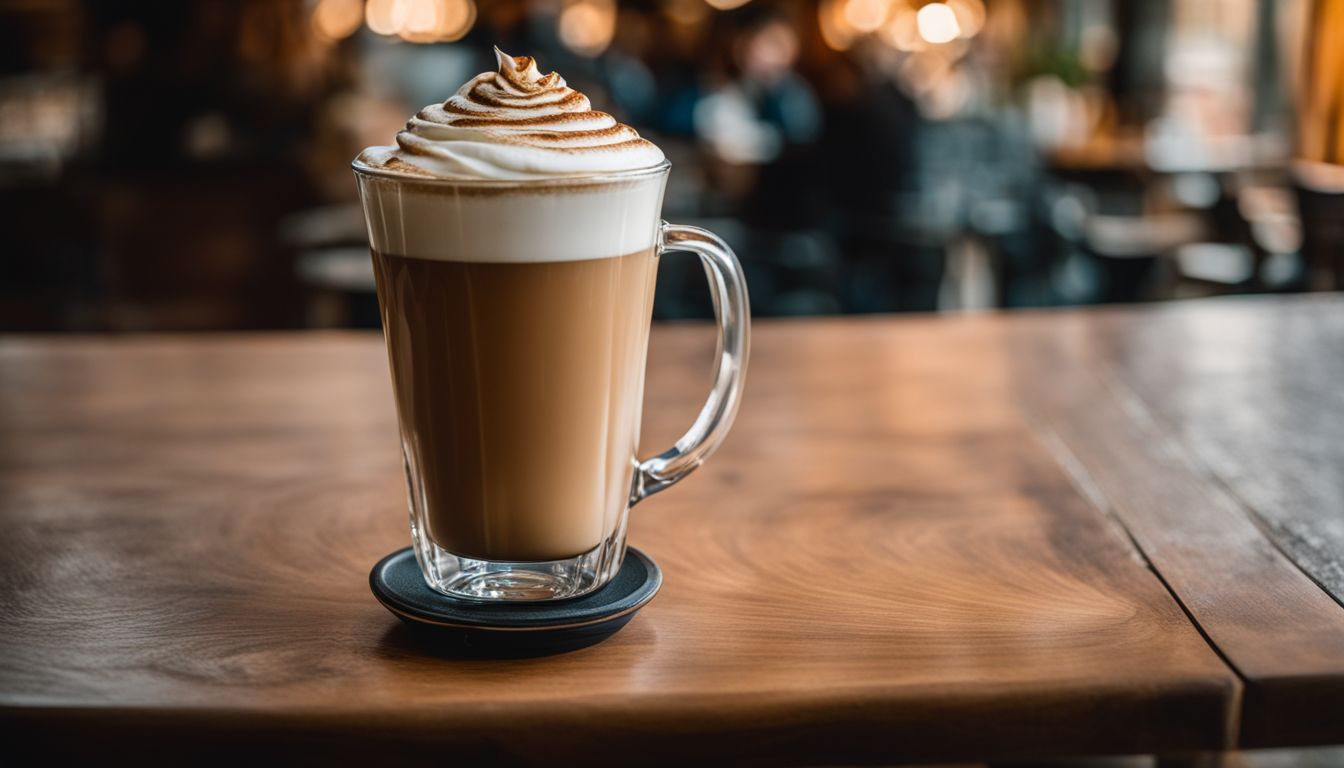Blog
Best Coffee Types And Drinks
Are you confused by coffee shop menus? Do you find it difficult to distinguish between a latte and a cappuccino? You’re not the only one. Many coffee enthusiasts find themselves uncertain about the various coffee types and drinks.
Coffee is available in over 100 varieties worldwide. Each type has its own distinctive flavour and brewing method. This article will guide you through the finest coffee types and drinks.
You’ll learn about different beans, roasts, and popular beverages. By the end, you’ll be able to order coffee confidently.
What Are The Main Types Of Coffee Beans?
Coffee beans come in four main types. Each type has its own taste and smell.
Arabica
Arabica beans rule the coffee world. They make up over 60% of global coffee output. These beans grow best in cool, high places. You’ll find them at heights of 3600 to 6300 feet. Brazil, Colombia, Ethiopia, and Costa Rica are top growers.
Arabica comes in many types. Typica, Bourbon, Caturra, and Kona are just a few. The taste? Think chocolate, caramel, and nuts. Some even have fruit hints. Arabica thrives in temps between 15°C and 24°C.
It’s the go-to bean for a smooth, rich cup.
Robusta
Robusta coffee makes up 40% of all coffee grown worldwide. It’s a tough plant that likes hot weather over 30°C and needs lots of water. You’ll find Robusta growing from sea level up to 600 metres high.
Vietnam grows the most Robusta, with Brazil, Indonesia, India, and Uganda next in line.
This coffee packs a punch with more caffeine and less sugar than Arabica beans. It tastes earthy and bitter, with hints of peanut at the end. If you like strong coffee, Robusta might be your cup of tea…
or coffee!
Liberica
Liberica coffee beans are large and distinctively shaped. They’re renowned for their distinctive aroma and flavour profile. These beans offer floral and fruity notes, with a full body and smoky taste.
Liberica gained prominence in 1890 following a coffee rust crisis. The Philippines pioneered Liberica cultivation to address the coffee shortage.
Excelsa
Excelsa coffee, found in Africa in 1903, is a unique bean. It grows mainly in Southeast Asia and India. These beans look odd – they’re not even on both sides. They have less caffeine than Arabica or Robusta.
You need to roast them at higher temps because they’re denser.
Excelsa adds a tart, fruity taste to coffee blends. It’s not as common as other types, but it’s gaining fans. You might find it mixed with Arabica for a more complex flavour. Some say it tastes like dark roast and light roast at the same time.
It’s worth a try if you want something different.
How Do Different Roast Levels Affect Coffee Flavour?
Roast levels shape coffee’s taste. Light roasts keep bright flavours. Dark roasts bring out bold, smoky notes. Want to know more? Keep reading!
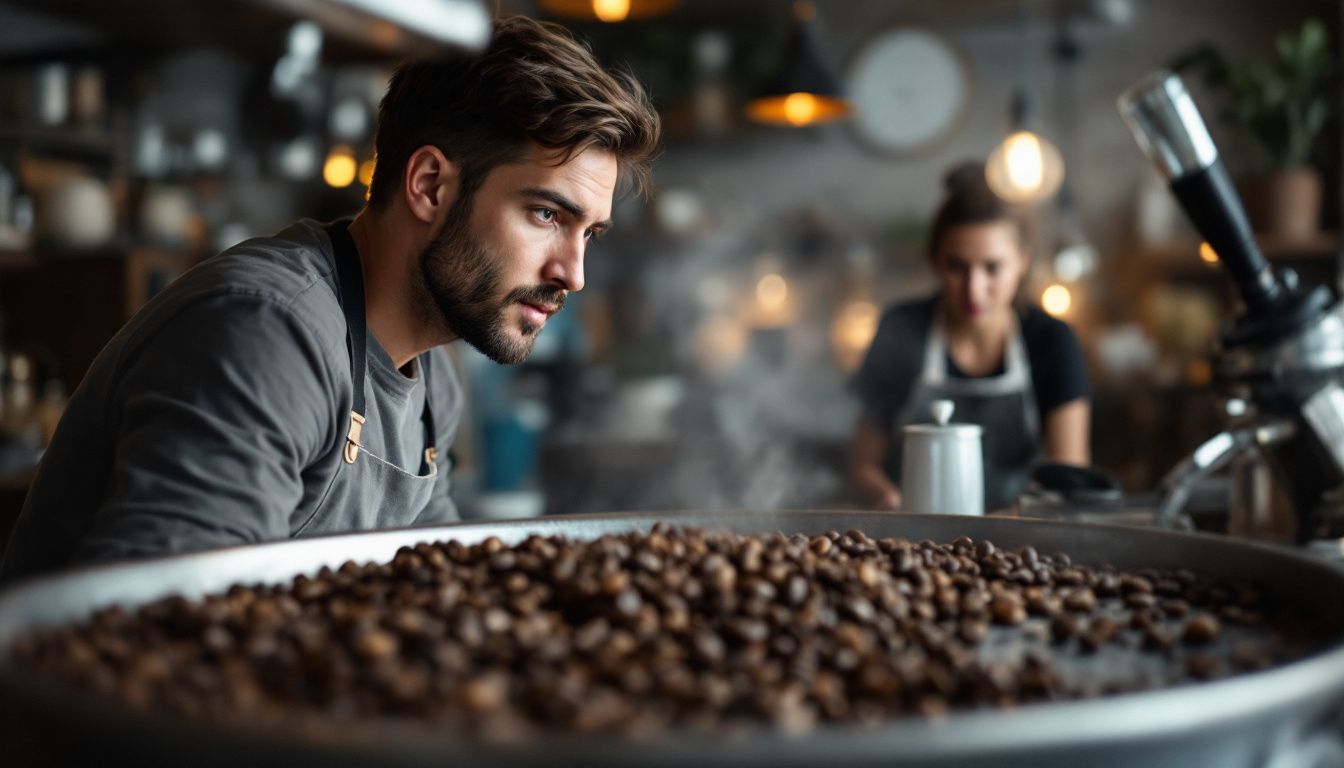
Light Roast
Light roast coffee presents a distinctive taste. It’s roasted at about 196°C, retaining more moisture in the beans. This produces a thinner drink with fruity and floral notes. You’ll notice light roasts contain more caffeine than dark ones.
Many coffee enthusiasts appreciate their bright flavours.
These coffees highlight the bean’s original character. They’re ideal for discerning subtle differences between coffee types. You might detect hints of citrus, berries, or nuts. Light roasts perform well in pour-over or drip methods.
They allow you to sample the variety of single-origin coffees.
Medium Roast
Medium roast coffee hits a sweet spot. It’s roasted at 204°C to 221°C, giving you a balanced cup. You’ll taste nutty and chocolatey notes with less acid than light roasts. This roast works well for many brewing methods.
It’s popular because it keeps some of the bean’s original flavour while adding depth.
You can enjoy medium roast as espresso or filter coffee. It’s great for cappuccinos and lattes too. The roast level brings out natural oils in the beans. This creates a rich body without being too heavy.
Many coffee lovers choose medium roast for its versatility and smooth taste.
Dark Roast
Dark roast coffee offers a strong flavour profile. It’s roasted at 221°C to 226°C, resulting in a bold, rich taste. You’ll notice hints of nuts, maple, and chocolate in each sip.
This roast works well for your lattes and cappuccinos. It has lower acidity compared to lighter roasts but a more bitter taste. Many coffee enthusiasts prefer dark roast for its strong, full-bodied flavour.
You can recognise dark roast beans by their shiny, oily appearance. They’re almost black in colour. This roast level brings out the coffee’s natural oils. It produces a drink with a heavier mouthfeel.
Dark roast is suitable if you enjoy your coffee with an intense flavour. Find out the differences between light, medium and dark roasts if you need more info.
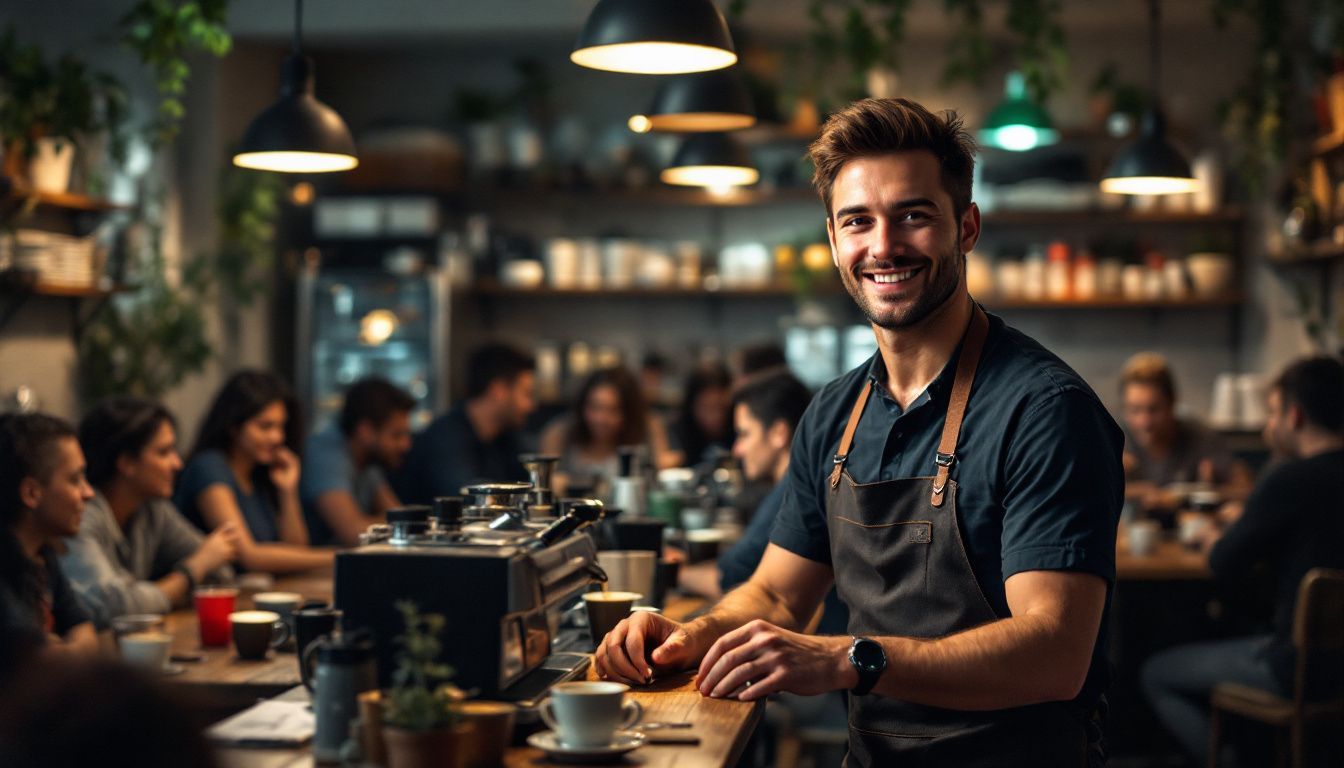
What Are Popular Espresso Based Coffee Drinks?
Espresso-based drinks are a hit in coffee shops. You can find many tasty options made with this strong coffee.
Espresso
Espresso packs a powerful coffee punch in a tiny cup. This concentrated shot comes from dark roast beans, ground super fine. You need special gear to make it right – an espresso machine pushes hot water through the grounds at high pressure.
The result? A small serving with a rich flavour and creamy top layer called crema. Baristas often use espresso as the base for other drinks like cappuccinos and lattes. It’s a quick caffeine hit that coffee lovers enjoy straight or mixed.
Cappuccino
Cappuccino is a top coffee choice worldwide. It’s made with equal parts coffee, milk, and foam. You’ll find it in 24 countries as the go-to drink. Its name comes from Capuchin friars’ robes, which match its colour.
This drink blends rich espresso with steamed milk and frothy foam. You get a perfect mix of bold coffee and creamy texture. It’s a hit in coffee shops and homes alike. Many folks start their day with this tasty brew.
Latte
Lattes are a popular coffee drink. You’ll find them made with 1 part coffee and 3 parts milk. A layer of foam tops it off. Lattes have more milk than cappuccinos. This gives them a creamy taste with a mild coffee flavour.
Many coffee shops add latte art to these drinks. The barista makes pretty designs in the foam. You can get lattes hot or iced. They’re a great choice if you like milky coffee with a soft taste.
Americano
Americano is a bold coffee without milk or froth. You make it by adding hot water to espresso. This simple mix gives you a drink like drip coffee, but with a richer taste. American soldiers made it popular during World War II.
They wanted a coffee that felt like home.
You’ll find Americanos in most coffee shops now. It’s a great choice if you want a strong coffee flavour without the thick texture of espresso. The hot water softens the taste a bit.
You can drink it black or add milk and sugar to suit your taste.
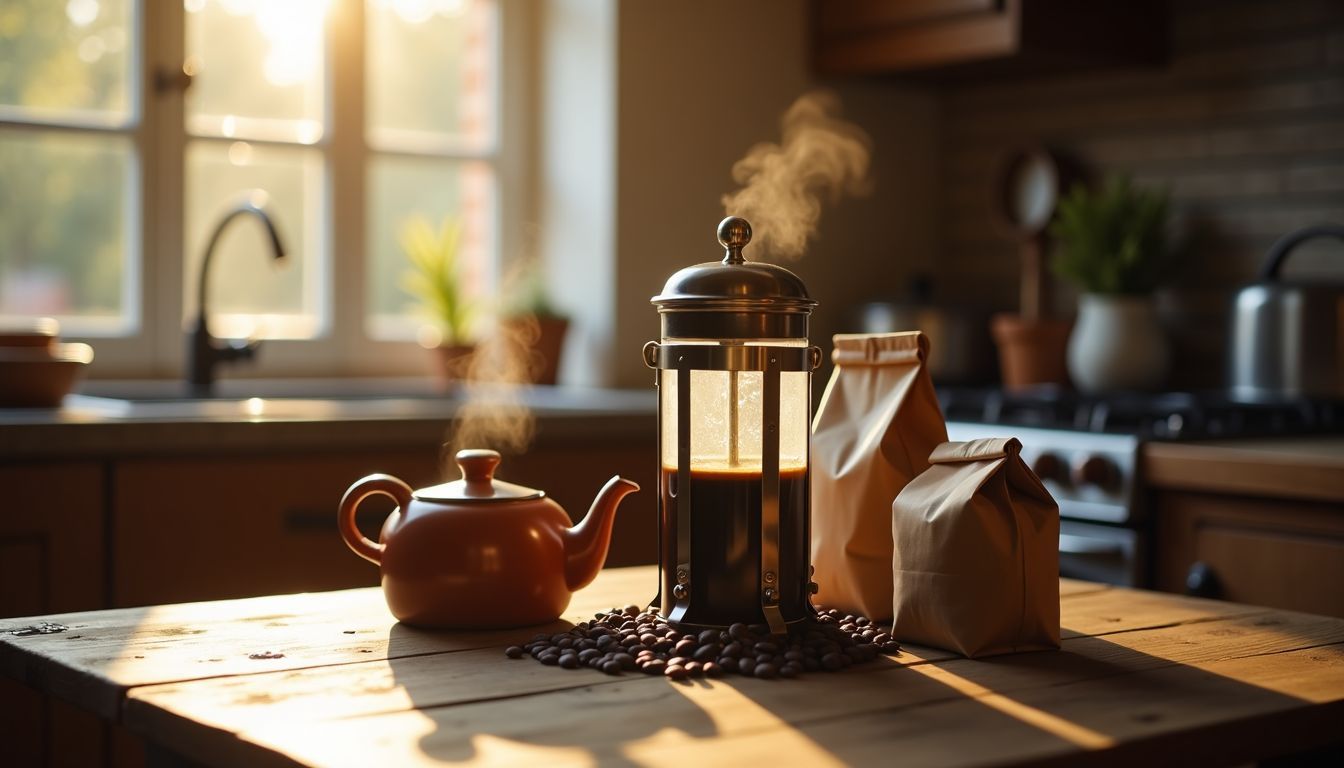
What Are Common Non Espresso Coffee Preparations?
Non-espresso coffee methods offer a world of flavour beyond the espresso machine. From classic drip to trendy pour-over, these brews let you enjoy coffee’s rich taste in new ways. Read on to learn about these exciting options!
Drip Coffee
Drip coffee is a simple, popular brew method. You add ground coffee to a filter in an automatic machine. Hot water drips through the grounds, creating a smooth cup. It’s quick and easy, making it a top choice for homes and offices.
Most drip machines can make 8-12 cups at once.
You’ll find drip coffee makers in many kitchens. They’re user-friendly and produce consistent results. The taste can vary based on the coffee beans and grind size you use. For the best flavour, use fresh, medium-ground beans.
Clean your machine often to keep your coffee tasting great.
French Press
French press is a top coffee brewing method. You use a plunger to push down coffee grounds, leaving rich liquid above. This creates a full-bodied taste that many love. It’s easy to make Café au Lait with a French press too.
Just add hot milk to your brewed coffee for a creamy drink.
French press coffee stands out for its bold flavour. The metal filter lets oils and tiny bits from the beans pass through. This gives you a stronger cup than paper filters do. You can control the brew time to suit your taste.
Longer steeping makes a stronger coffee.
Pour-Over
Pour-over coffee allows you to control how your brew tastes. You use a filter and pour hot water slowly over ground beans. This method highlights the coffee’s authentic flavours. It works best with light roast beans.
You can adjust the water temperature, pour speed, and grind size to achieve your ideal cup. Many coffee enthusiasts appreciate pour-over for its clean, bright taste.
To prepare pour-over, you need a few tools. Acquire a dripper, filter, kettle, and scale. Grind your beans just before brewing. Heat water to about 95°C. Wet the filter first. Add coffee, then pour water in a spiral.
The whole process takes about 3-4 minutes. You’ll end up with a smooth, flavourful brew that showcases your coffee’s distinctive characteristics.
Cold Brew
Cold brew coffee is a smooth, less acidic drink. You make it by steeping coffee beans in cold water for 6 to 36 hours. This long process pulls out rich flavours without the bitter taste.
Many coffee lovers enjoy cold brew year-round, not just in summer.
Cold brew serves as a base for other drinks too. Nitro coffee, a trendy option, starts with cold brew. Shops add nitrogen to give it a creamy texture. You can find cold brew in bottles or on tap at many cafes now.
It’s a great choice if you want a cool, strong coffee without ice.
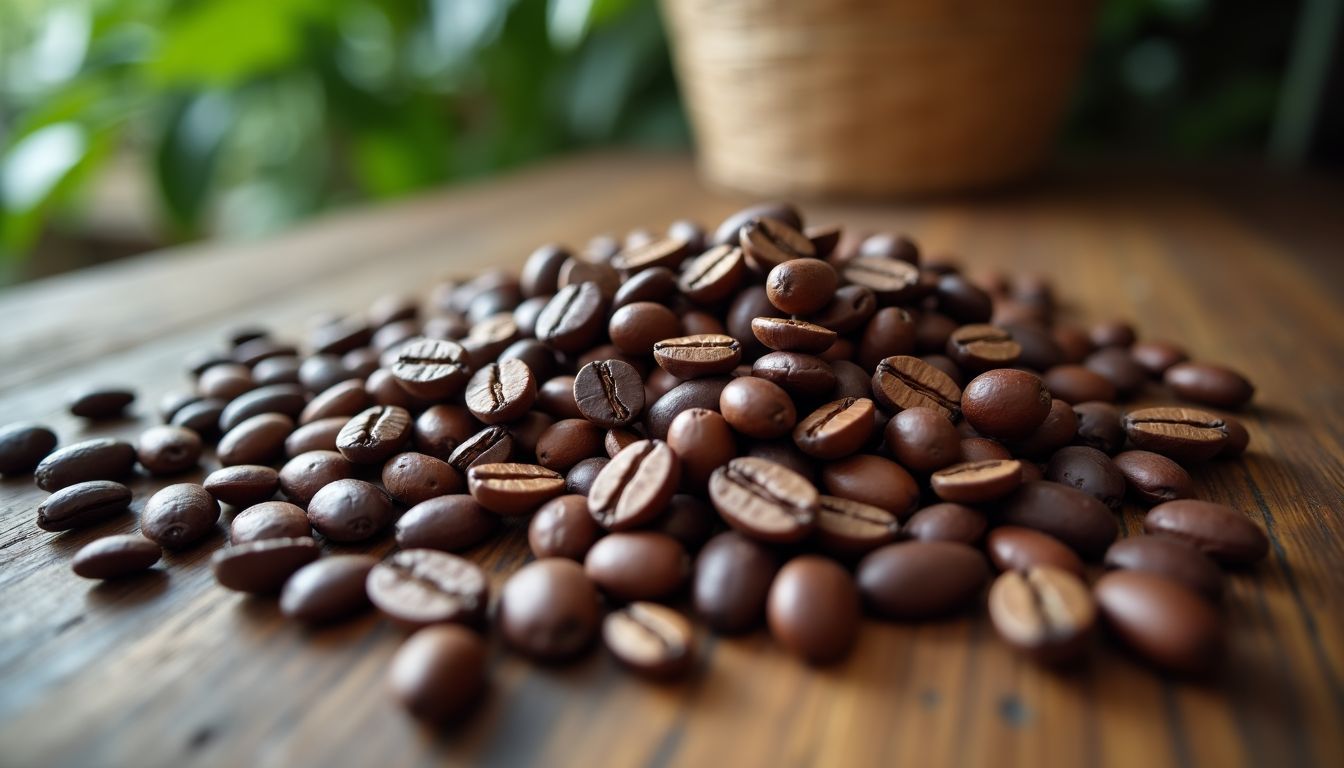
How Do Regional Coffee Varieties Differ?
Coffee tastes change as you travel the world. Each region has its own way of growing and brewing coffee, giving it a unique flavour.
Italian Coffee
Italian coffee culture values simplicity and tradition. You’ll find espresso as the star in Italian bars. These spots serve quick shots of strong coffee to patrons. Italians enjoy cappuccinos, but only before 11 am.
After that, it’s pure espresso all the way.
Italy’s coffee scene focuses on quality over fancy drinks. You won’t see large cups or flavoured syrups here. Instead, expect small, potent servings of rich coffee. The Italian method creates a smooth taste with a thick crema on top.
This style has spread worldwide, inspiring coffee lovers everywhere.
Turkish Coffee
Turkish coffee originates from the Ottoman Empire. It’s a potent brew crafted with finely ground Arabica beans. You’ll discover it’s more than a mere beverage – it’s a symbol of friendship.
People often enjoy it during social conversations. The coffee boasts a rich flavour and thick consistency. You can sample various types as well. There’s Turkish coffee with chocolate for a sweet variation.
On warm days, cold Turkish coffee offers a cooling option. Its distinctive preparation method distinguishes it from other coffees.
Vietnamese Coffee
Vietnamese coffee packs a punch. It came to Vietnam in 1857 and now the country grows five main types of beans. You’ll find it brewed slowly with an aluminium filter. This makes a strong, rich drink.
Two popular choices stand out. Cà Phê Đen Đá is black iced coffee. Cà Phê Sữa Đá mixes sweet milk with ice and coffee. Both offer a cool break from the heat. These drinks show how Vietnam puts its own spin on coffee.
Ethiopian Coffee
Ethiopian coffee stands out for its distinctive taste. It offers a fruity, sweet, and slightly tart flavour profile. Ethiopia is the birthplace of coffee. The high-altitude regions there enhance the beans’ flavour.
Most Ethiopian coffee comes from Arabica plants, which thrive in the cooler mountain air.
You’ll notice Ethiopian coffee has a rich flavour. It’s recognised for its bright acidity and floral notes. Farmers harvest the beans by hand to maintain high quality. This attention to detail is evident in every cup.
Sample Ethiopian coffee to experience a taste of coffee’s origins.
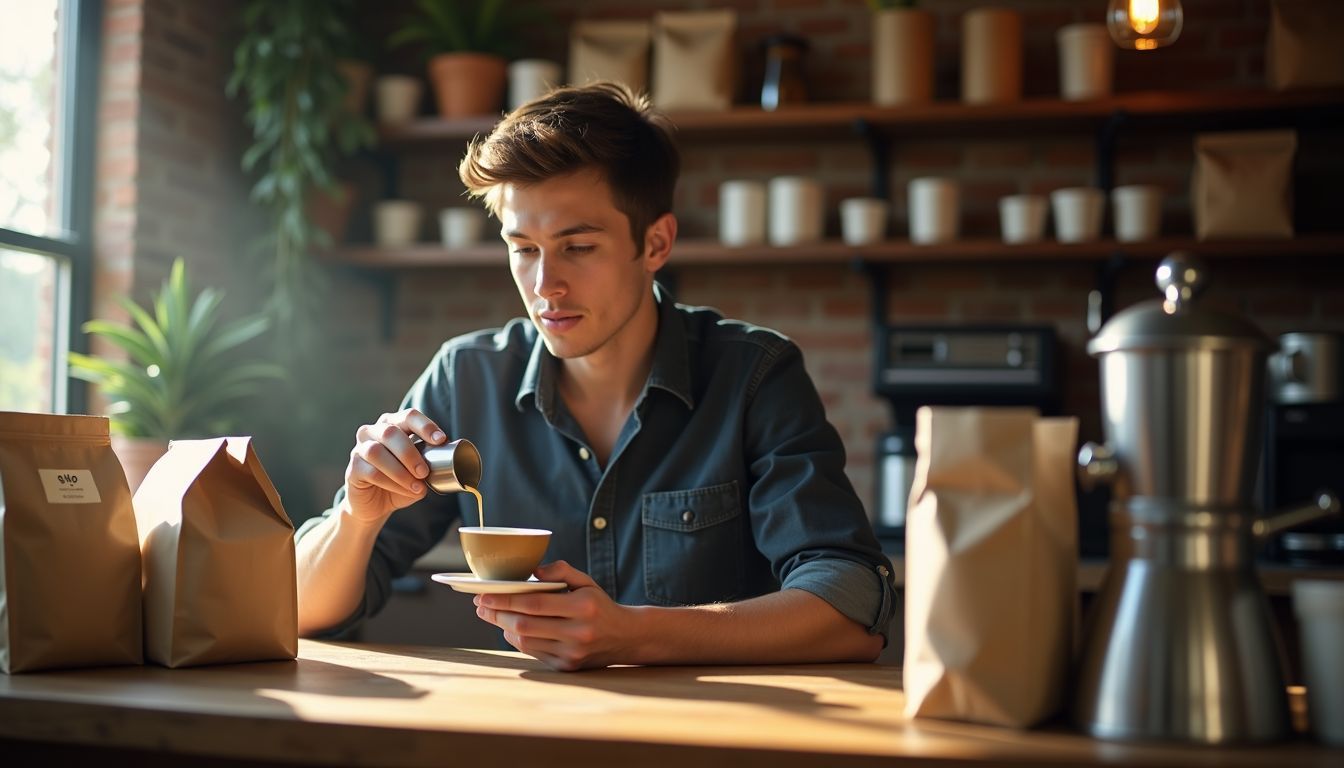
What Are Specialty Coffee Types?
Specialty coffee types offer unique tastes and stories. They come from special farms or have special labels that tell you about how they’re made.
Single Origin
Single origin coffee comes from one place. It’s grown on a single farm or in one region. You’ll taste unique flavours from that area in your cup. These coffees showcase special traits from their home soil and climate.
Coffee enthusiasts seek out single origins for their distinct taste. Each batch tells a story of its roots. You might find fruity notes from Ethiopia or nutty hints from Brazil. Single origin allows you to experience coffee’s rich diversity, one sip at a time.
Blend
Blends mix different coffee beans to create unique flavours. You’ll often find them in specialty coffee shops. They offer a mix of tastes that single-origin coffees can’t match. Roasters craft blends to give you a balanced cup every time.
Most certified specialty coffees use blends. This lets them keep the same taste all year round. Blends also let roasters make complex flavours. You might taste notes of chocolate, fruit, or nuts in one cup.
Blends give you a chance to try new taste combos without buying lots of different coffees.
Organic
Organic coffee meets strict standards. Farmers grow it without synthetic pesticides or fertilisers. This method protects the environment and your health. It often tastes richer and more complex than regular coffee.
You’ll find organic coffee with special labels. These show it’s certified by official bodies. Many coffee lovers choose organic for its purity and eco-friendly production. It’s a top pick for those who want high-quality, ethical brews.
Fair Trade
Fair Trade coffee gives farmers a better deal. You can find it in many UK shops now. Bailies Coffee sells Pendo coffee with the Fair Trade mark. Cafédirect offers organic Fair Trade beans from single farms.
These coffees taste great and help growers earn more. When you buy Fair Trade, you support small coffee farms. Waitrose even has a Colombian Reserve coffee from the country’s main growing area.
How Do Flavored Coffees Differ From Traditional Types?
Flavoured coffees add a twist to your usual brew. They mix sweet or nutty tastes with coffee’s rich flavour. Want to know more about these tasty blends? Keep reading!
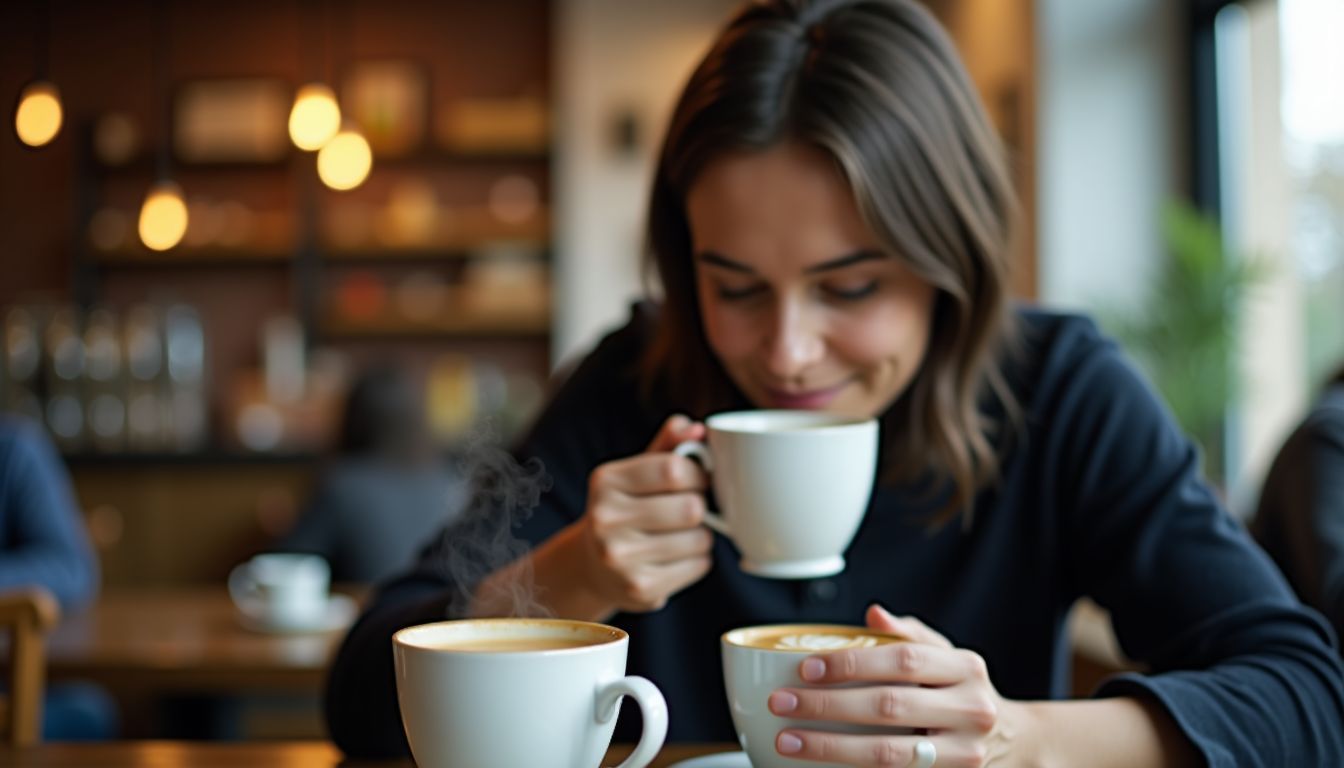
Vanilla
Vanilla coffee presents a sweet, aromatic taste. It combines coffee’s boldness with vanilla’s smooth flavour. French vanilla coffee adds extra creaminess and sweetness. It often uses artificial sugars for a fuller taste.
Madagascar, Tahiti, and Mexico produce most of the world’s vanilla. These regions impart unique flavours to vanilla coffee. The natural sweetness of vanilla enhances coffee’s aroma.
You’ll find vanilla in many coffee shops and home brews.
Hazelnut
Hazelnut coffee offers a sweet, nutty taste. It’s made by adding flavour oils to coffee beans. This type often uses cheaper beans, which can hurt farmers’ pay. The oils can build up in your grinder over time.
Many coffee shops sell this popular drink. You’ll find it as whole beans, ground coffee, or ready-made in bottles.
Caramel
Caramel coffee offers a sweet, rich taste. It’s a popular choice for lattes and other fancy drinks. You’ll find this flavour in many coffee shops. It mixes well with milk and cream.
Caramel adds a smooth, buttery note to your cup.
You can make caramel coffee at home too. Just add caramel syrup to your brew. Or try caramel-flavoured coffee beans. These give a subtle hint of sweetness. Pair it with a pastry for a real treat.
Seasonal Flavours
Coffee shops love to spice things up with seasonal flavours. You’ll find pumpkin spice lattes in autumn and peppermint mochas in winter. These drinks mix coffee with festive tastes that match the time of year.
Many people look forward to these special flavours each season.
Shops often use natural ingredients to create these seasonal drinks. They might add real pumpkin puree or fresh mint leaves. This keeps the flavours true and tasty. Some popular summer options include iced coconut lattes or lavender cold brews.
These cool drinks help you beat the heat while enjoying your coffee fix.
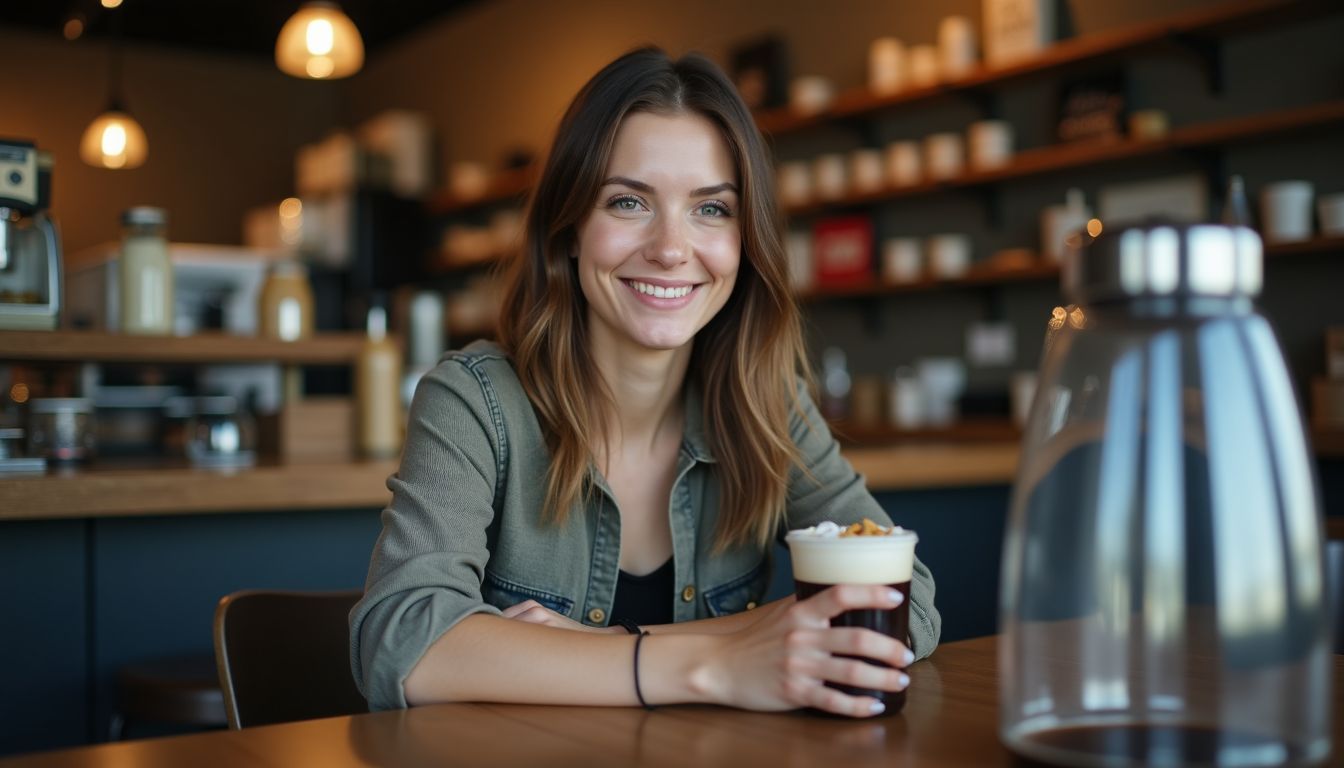
What Are Emerging Trends In Coffee Types?
Coffee trends keep changing. New types like nitro cold brew and butter coffee are gaining fans.
Nitro Cold Brew
Nitro cold brew provides a smooth, creamy coffee experience. This popular drink steeps for 8 to 12 hours and gets infused with nitrogen. The outcome is a velvety texture and almost no calories.
Nate Armbrust at Stumptown Coffee Roasters created it in 2013. Now, you can find it in upscale coffee shops and large chains like Starbucks.
You’ll appreciate the distinct taste of nitro cold brew. It’s less bitter than regular iced coffee. The nitrogen adds tiny bubbles, giving it a beer-like appearance. Many people enjoy it without milk or sugar.
It’s an excellent choice for hot summer days when you need a cool caffeine boost.
Butter Coffee
Butter coffee mixes brewed coffee with unsalted butter and MCTs. It’s a high-fat, low-carb drink that suits keto diets. A typical cup contains 445 calories. Some enjoy its rich flavour, while others have concerns about potential heart risks due to its saturated fat content.
You may like this fashionable brew if you’re looking for a fat boost. However, it’s quite different from your usual cup of coffee. Health professionals often express concern about its fat content.
It’s wise to consult your doctor before making it part of your daily routine.
Mushroom Coffee
Mushroom coffee combines ground fungi with coffee beans. It contains half the caffeine of regular coffee. You’ll find Chaga, Turkey tail, Lion’s mane, Reishi, and Cordyceps in these mixtures.
Animal studies suggest potential health benefits, but further research is required.
This popular beverage blends coffee and mushrooms. It’s milder than your typical cup, but it may offer additional advantages. The fungi used are recognised for their possible health-enhancing properties.
However, more human studies are needed to confirm these effects.
CBD Infused Coffee
CBD infused coffee combines two popular trends: coffee and CBD. This mix aims to give you a calm energy boost. The market for this drink is expected to increase from £278 million in 2023 to £1,188 million by 2032.
More people are becoming interested as they learn about its health benefits.
You can find CBD coffee in many forms. Some shops add CBD oil to your cup. Others sell beans coated with CBD. The taste remains similar to regular coffee, with a hint of earthy notes.
North America leads sales due to favourable laws. New flavours and organic options are attracting more customers each day.
Conclusion
Coffee presents a variety of flavours and styles. You’ve gained knowledge about beans, roasts, and common drinks. Espresso-based and non-espresso options provide you with numerous choices.
Regional varieties contribute distinct tastes for you to sample. Specialty and flavoured coffees introduce new twists to your cup. Sample nitro cold brew or butter coffee for a different approach.
